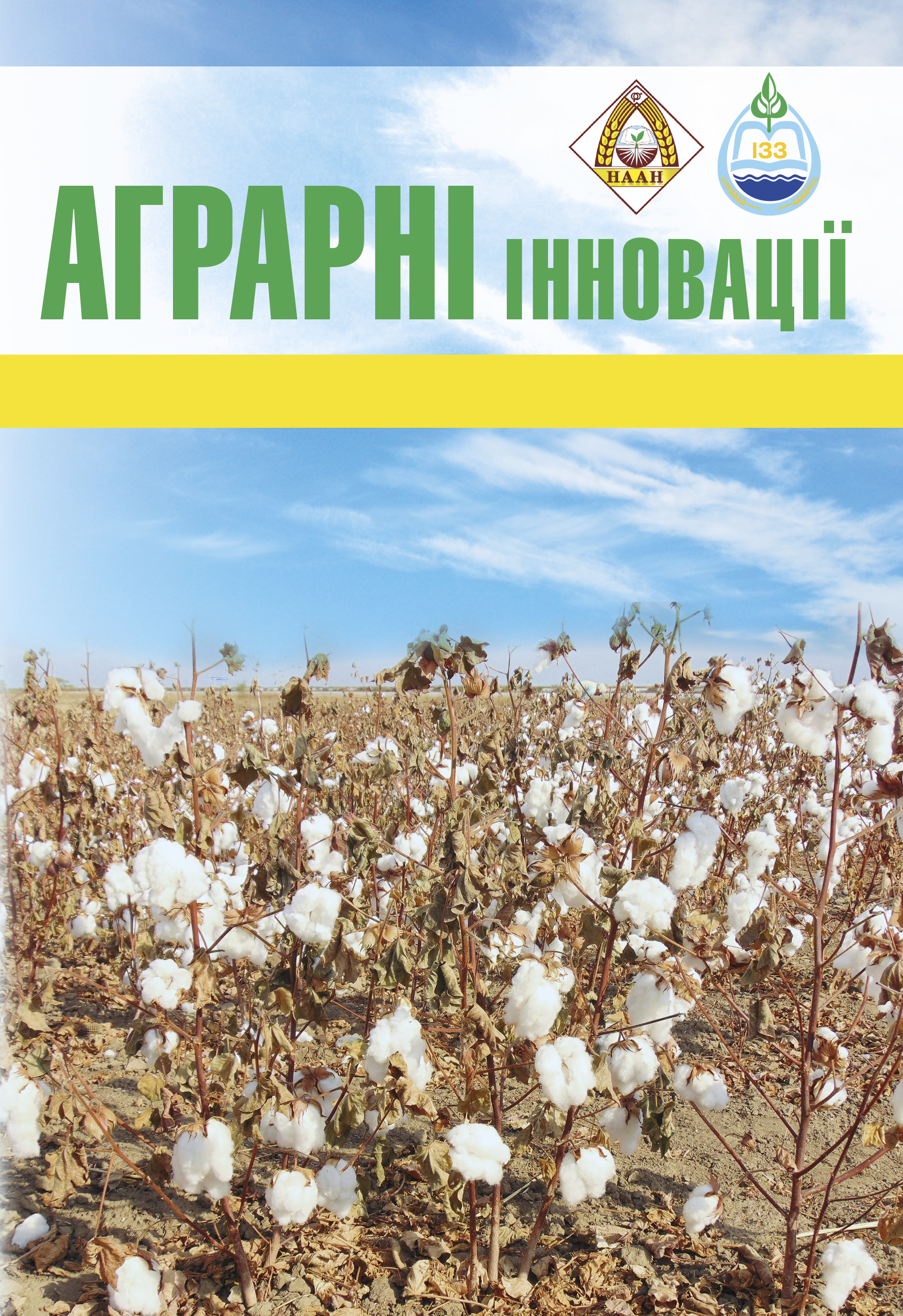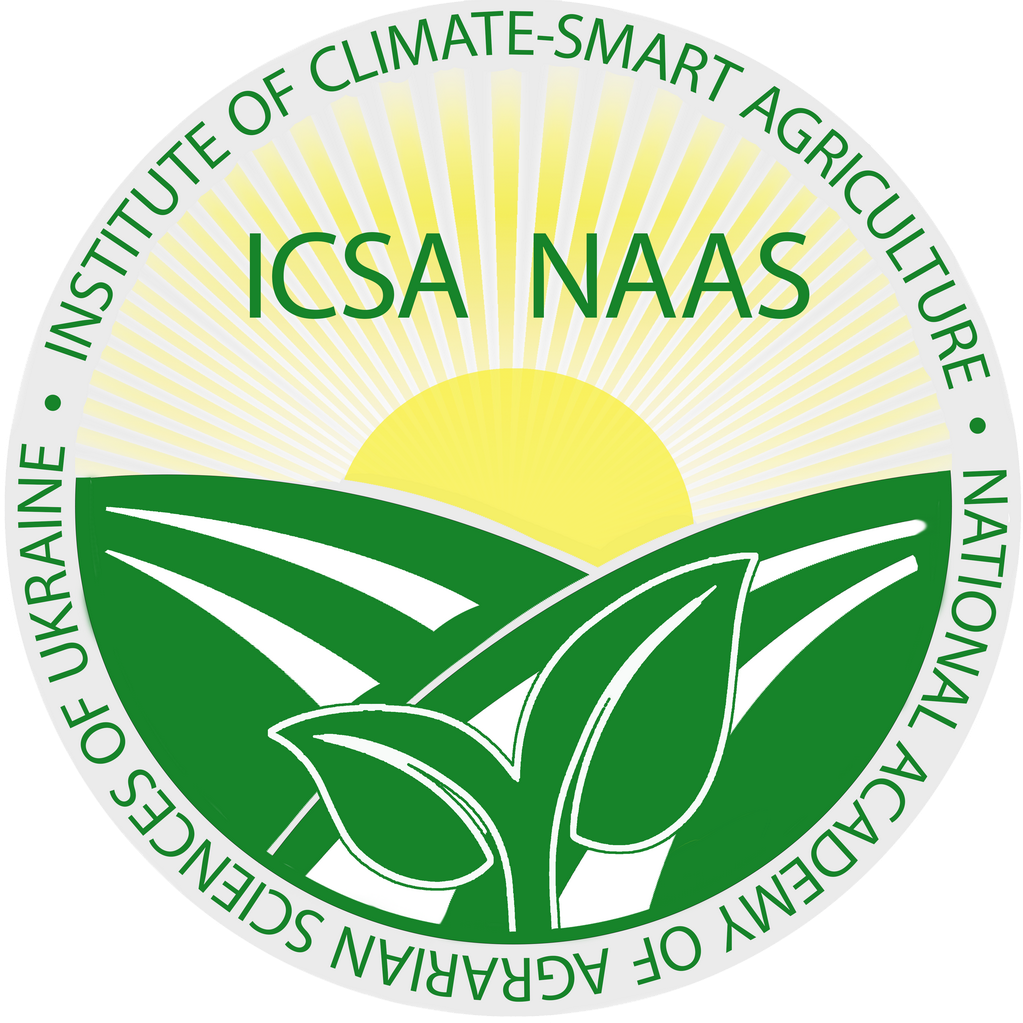Formation of economic valuable indicators in Satureja Hortensis L. depending on growing agrotechnical methods in the conditions of the Central Forest-Steppe
Abstract
Purpose. The purpose of the work is to study the dynamics of growth and development, the formation of economically valuable traits of Satureja hortensis L. depending on the timing of sowing and moisture conditions in the Central Forest-Steppe. Methods. The research was conducted in 2024 in the conditions of the Central Forest- Steppe. The soil of the area where the research was conducted is typical black soil. The material for the research was a sample of Satureja hortensis L. No. 6-23. The seeds of this sample were sown in two rows with a row spacing of 50 cm. The first sowing period was carried out in the third decade of April. A decade later, the second sowing period was carried out. Crop irrigation was carried out in three variants, which included intensive drip irrigation, moderate drip irrigation and natural moistening. Phenological observations and biometric measurements were carried out for the crops. Every two weeks, the height and diameter of the plants were measured, the mass of the above-ground part of the plants was determined. The mass fraction of essential oil in the plant raw materials was determined bythe Ginsberg method on the Clevenger apparatus. Results.The duration of the development phases of Satureja hortensis L. plants differed depending on the sowing dates.The tillering phase occurred for plants of the second sowing date three days later than for the first sowing date. The beginning of the budding phase was observed 44 days after the beginning of the tillering phase for plants from the first sowing date and 32 days later for plants from the second sowing date. The duration of the interphase period from budding to the beginning of flowering for plants from the first sowing date was 13 days, and for plants from the second sowing date it was 5 days shorter. Flowering of plants from the second sowing date also occurred in a shorter period. In the process of plant development, a gradual increase in the height and diameter of plants was noted.At the mass flowering phase, plants from the first sowing date were 45 to 57 cm high, with a diameter of 40 to 52 cm. At the same time, the above-ground mass indicators ranged from 62 to 121.7 g per plant. During the second sowing period at the mass flowering phase, the plants had a height ranging from 45 to 47 cm, with a diameter of 37 to 45 cm. The above-ground mass indicators ranged from 61 to 89 g per plant. The highest indicators of height, diameter and mass of the above-ground part were recorded for variant with intensive irrigation during the first sowing period, and the lowest ones were recorded for the natural moistening variant of the second sowing period. During the growing season, the content of essential oil in the vegetable raw materials of Satureja hortensis L. gradually increased in all variants of the experiment. The mass fraction of essential oil at the mass flowering phase varied from 0.14 to 0.67%.The highest mass fraction of essential oil was observed for plants in variant with the first sowing period and with natural humidification. And the yield of essential oil from one plant was maximum for variant with the first sowing date and with moderate drip irrigation (0.55 g). Conclusions. Thus, in the conditions of the Central Forest-Steppe, Satureja hortensis L. plants from the first sowing period and with intensive drip irrigation have the highest height and diameter indicators and form the highest yield of above-ground mass. The maximum indicators of the mass fraction of essential oil were recorded in plants from the first sowing period with natural moisture. However, the yield of essential oil from one plant, that is, plant productivity, was maximum in variant with the first sowing period with moderate drip irrigation.
References
2. Польовий А.М., Кульбіда М.І., Адаменко Т.І., Трофімова І.В. Моделювання впливу зміни клімату на агрокліматичні умови вирощування та фотосинтетичну продуктивність озимої пшениці в Україні. Український гідрометеорологічний журнал. 2007, №2. С. 76-91.
3. Коваленко О. А., Стебліченко О. І. Ріст та розвиток чаберу садового (Satureja hortensis L.) залежно від елементів технології вирощування в умовах Південного Степу України. Основні, малопоширені і нетрадиційні види рослин – від вивчення до освоєння (сільськогосподарські і біологічні науки) : матеріали IІ Міжнар. наук.-практ. конф, с. Крути, Черніг. обл., 14-15 бер. 2018 р. Обухів : Друкарня ФОП Гуляєва В. М., 2018. Т. 3. С. 126-132.
4. Liudmyla Svidenko, Marharyta Karnatovska. Еssential oil plant species. Publication for Specialized Courses of the International Project FarmersEduca Neglected and Underutilized Species in the Socio-Economic Rural Development. Slovak University of Agriculture in Nitra. 2018. Р. 105 http://www.slpk.sk/eldo/2018/dl/9788055218502/9788055218502.html
5. Irina Fierascu, Cristina Elena Dinu-Pirvu, Radu Claudiu Fierascu, Stefan Velescu, Valentina Anuta, Alina Ortan, Viorel Jinga Phytochemical Profile and Biological Activities of Satureja hortensis L.: A Review of the Last Decade. Molecules 2018. Vol. 23. Issue 10. 2458; https://doi.org/10.3390/molecules23102458
6. Şahin F., Karaman İ., Güllüce M., Öğütçü H., Şengül M., Adıgüzel A., Öztürk S., Kotan R. Evaluation of antimicrobial activities of Satureja hortensis L. Journal of Ethnopharmacology. 2003. Vol. 87, Issue 1. Pages 61-65 https://doi.org/10.1016/S0378-8741(03)00110-7
7. Javad Hadian, Samad Nejad Ebrahimi, Peyman Salehi. Variability of morphological and phytochemical characteristics among Satureja hortensis L. accessions of Iran. Industrial Crops and Products. 2010. Vol. 32, Issue 1. P. 62-69. https://doi.org/10.1016/j. indcrop.2010.03.006
8. Afaf Ejaz, Sadaf Waliat, Muhammad Sajid Arshad, Waseem Khalid, Muhammad Zubair Khalid, Hafiz Ansar Rasul Suleria, Marian-Ilie Luca, Costel Mironeasa, Ana Batariuc, Mădălina Ungureanu-Iuga, Ionica Coţovanu, Silvia Mironeasa. A comprehensive review of summer savory (Satureja hortensis L.): promising ingredient for production of functional foods. Ethnopharmacology. 2023. Vol. 14. https://doi.org/10.3389/fphar.2023.1198970
9. Ramona A. Popovici Delia Vaduva Iulia Pinzaru Cristina A. Dehelean Claudia G. Farcas Dorina Coricovac Corina Danciu Iuliana Popescu Ersilia Alexa Voichita Lazureanu Horia T. Stanca A comparative study on the biological activity of essential oil and total hydro-alcoholic extract of Satureja hortensis L. Experimentaland Therapeutic Medicine. 2019. Vol. 18 Issue 2. Р. 932-942 https://doi.org/10.3892/etm.2019.7635
10. Свиденко Л.В. Перспективні ефіроолійні види роду Saturejа L. в умовах Херсонської області. Й.К. Пачоський та сучасна ботаніка: матеріали міжнародної конференції. Херсон: Айлант, 2004. С. 363-365
11. Duran Katar, Oya Kacar, Nimet Kara, Zehra Aytaç, Erdinç Göksu, Sedat Kara, Nimet Katar, Sabri Erbaş, İsa Telci, Mahfuz Elmastaş Ecological variation of yield and aroma components of summer savory (Satureja hortensis L.) Journal of Applied Research on Medicinal and Aromatic Plants. 2017. Vol. 7. P. 131-135. https://doi.org/10.1016/j.jarmap.2017.07.005
12. Котюк Л.А., Іващенко І.В Чабер садовий (Satureja hortensis) в умовах ботанічного саду Поліського національного університету. Екологічні науки. 2022. №5 (44). С. 201-206. DOI https://doi.org/10.32846/2306-9716/2022.eco.5-44.30
13. Коваленко О. А., Стебліченко О. І. Урожайність та економічна ефективність вирощування чаберу садового (Satureja hortensis L.) в умовах Південного Степу України. Зрошуване землеробство: збірник наукових праць. 2020. Вип. 74. С. 169–177. URL: https://strategy2027-ck.gov.ua/wp-content/uploads/2023/11/PROFIL-CHERKASKOYI-OBLASTI-16.06.2020.pdf
14. Методика проведення експертизи сортів рослин групи декоративних, лікарських та ефіроолійних, лісових на придатність до поширення в Україні. 2016. https://www.sops.gov.ua/uploads/page/5a5f417dd0990.pdf.
15. Методика післяреєстраційного вивчення сортів рослин (ПСВ) / За ред. Ткачик С. О. Вінниця: ТОВ «Нілан-ЛТД», 2015. – 28 с.
16. Работягов В.Д., Свиденко Л.В. Створення висо- копродуктивних форм лаванди при міжвидових схрещуваннях. Методичні рекомендації. Ялта, 2010. 36 с.
17. Коваленко О.А., Чепак О.І. Біологічні особливості чаберу садового (Satureja hortensis L.) та перспективи його вирощування в умовах Миколаївської області. Таврійський науковий вісник. 2015. Вип. 90. С. 48-52.
18. Котюк Л.А., Рахметов Д.Б., Пінкіна Т.В. Оцінка успішності інтродукції ароматичних рослин родини Lamiaceae Lindl. в умовах Полісся України. Інтродукція рослин. 2017. №1. С.11-20 http://nbuv.gov.ua/UJRN/IR_2017_1_3

This work is licensed under a Creative Commons Attribution 4.0 International License.






